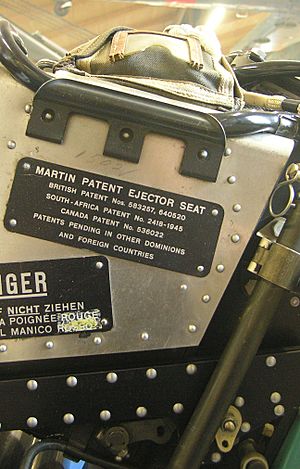Patent facts for kids
A patent is a special legal right given to an inventor. It lets them stop other people from making, using, or selling their new invention. If someone copies the invention without permission, the inventor can take them to court. The inventor can also sell their patent to another person or company.
A patent usually lasts for up to 20 years. After that time, anyone is free to copy and use the invention.
Each country has its own patents. For example, China gives Chinese patents, and the United States gives U.S. patents. An inventor can get a patent in any country they choose. They can even get patents in many different countries for the same invention. Each patent in each country costs money. The basic rules for patents are quite similar in most countries.
Contents
How to Get a Patent

To get a patent, an inventor must ask the government. They do this by writing a detailed description of their invention. This document is called a patent application. An inventor can write it themselves. However, it's often written by a special expert called a patent agent or a patent attorney. A patent attorney is also a lawyer.
The government doesn't just give out patents easily. They first check if the idea is truly new. This process is called patent examination. The government searches through books, articles, or other patents. They want to see if the idea has been made or described before. The inventor, or their attorney, then explains how their idea is different.
If the government agrees that the invention is new, they will grant the patent. They send the inventor a copy of their application with a special seal. This copy is the official patent document.
Inventors also need to pay fees to the government to get a patent. They usually pay when they apply and again when the patent is granted. In some countries, patent owners must also pay fees every few years to keep their patent active. These costs can vary, from cheap to quite expensive.
Using Your Patent Rights
The owner of a patent has the power to stop others from using their invention. If someone uses the invention without permission, it's called infringing the patent. If the patent owner finds out about this, they can ask a court to make the person stop. If the court agrees, the person who copied the invention might have to pay a fine to the patent owner.
A patent owner can also give other people permission to use their patent. This is called a license. Usually, the person who wants to use the invention pays money to the patent owner for this permission.
What Can Be Patented?
Patents usually cover new ideas about how things work or how they are made. This includes products or processes that have new functional or technical features. Patents can cover many different things, like:
- Electronics
- Medicines
- Agriculture
- Transport
It can be anything from a small part in an electric switch to a whole power station!
To get a patent, an idea usually needs to meet three main rules:
- It must be new: No one else has made or described the same or a very similar thing before.
- It must involve an inventive step: It's not something that just anyone could have easily thought of or made.
- It must have a real-world use: It must be useful for something practical.
Patent Marking
Sometimes, you might see a product marked with "patent pending" or "pat. pending." This means that the inventor has applied for a patent for that product or part of it. This mark warns people that they should not copy the invention.
Parts of a Patent Document
Patent documents are often very long and detailed. They include several smaller sections:
- The abstract is a short summary that briefly describes the invention.
- The background of the invention section describes other similar inventions and explains how the new idea is different.
The patent also includes a long section called the detailed description. In this part, the inventor explains every small detail of their invention.
Patents also have many figures, which are pictures or drawings of the invention. These drawings are usually made by special artists called draftsmen. The pictures have numbers that point to different parts of the invention.
At the very end of most patents, there is a section called the claims. These are usually numbered lists. They contain short statements that list all the important features needed for the invention. A court uses these claims to decide if someone else is "infringing the patent."
Images for kids
See also
 In Spanish: Patente para niños
In Spanish: Patente para niños






